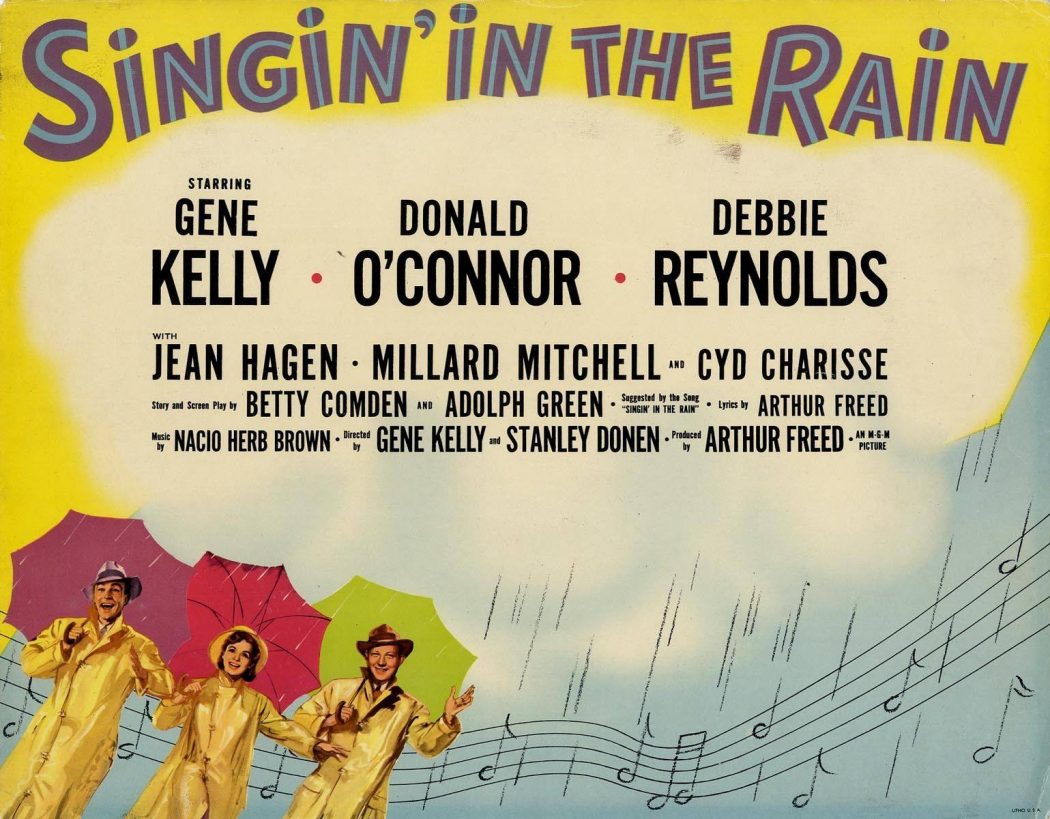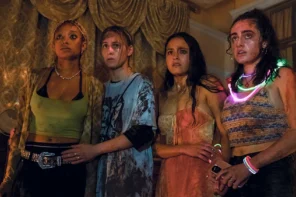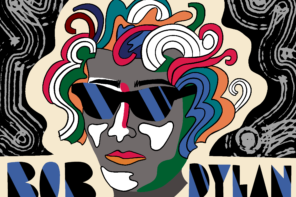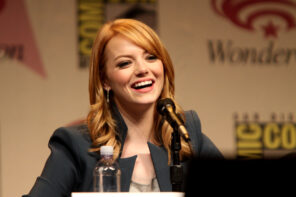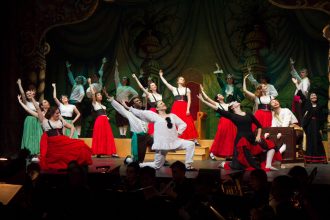Singin’ In The Rain will be playing at the Cinema Du Parc, at 10:00am on the 15th and 16th, and once more at 2:30pm on the 15th.
You may think you don’t like old movies. You may think you don’t like musicals. You’re wrong about both of those things, and Singin’ In The Rain is the film that will prove it to you. Try watching the delightful opening — in which Gene Kelly tap dances with a fiddle, gets sucker-punched by a cowboy in a saloon, and rides a motorcycle off a cliff — without cracking a smile. Try to watch a sequence like Moses Supposes or Make Em’ Laugh — two riotous, debaucherous dance numbers that push the limits of both the human body and the hollywood set — without giggling. This miraculous film bypasses your adult cynicism and discovers a shortcut to your soul. Even professional curmudgeons like Pauline Kael and Mike D’Angelo are nothing in the face of its power.
You may think you don’t like old movies. You may think you don’t like musicals. You’re wrong about both of those things
It takes place in Hollywood, 1927, following silent film stars Don Lockwood (Gene Kelly) and Lina Lamont (Jean Hagen), who play lovers onscreen (much to the chagrin of Don, who’s always refusing Lina’s advances). But trouble comes when Don hears about the invention of a ‘talking picture’, a new fangled type of movie where, imagine this, you can hear what the characters are saying. When Don is informed that the new Lockwood and Lamont picture The Duelling Cavalier, will become a talkie, he is forced to truly confront his fear of becoming irrelevant. His friend, the under-appreciated background musician Cosmo Brown (Donald O’Connor), tries to reassure him: “you do the same thing you always did, just add talking to it!” Would that it were so simple.
Many modern musicals overburden themselves with plot. The musicals just after the invention of the talkie, particularly the ones made by Busby Berkeley, preferred to string the viewer along a series of dazzling dance numbers and hold them together with only the thinnest spectre of plot, if that. Singin’ In The Rain pokes fun at this by doing the same with a wink and a nod: numbers like All I Do is Dream of You and Beautiful Girls don’t happen for story purposes, but rather to show off a bunch of top-notch choreography, costumes, colours, and sets. Broadway Melody is the apotheosis of this joke: it’s a literal showstopper, an epic fifteen minute dance number that begins for no reason and goes on and on and on. It’s both a meta shaggy dog joke and some kind of genuine abstract short film. It culminates in a fantasy sequence within a fantasy sequence, where Cyd Charisse vamps Gene Kelly on a pink heavenly staircase; it’s probably the only time Kelly let himself get upstaged on screen.
The film contrasts this extravagance with a series of emotional, character-driven, intimate dance numbers that aim for a different kind of awe. Debbie Reynolds holds the key to the film’s sweetness: she’s a struggling actor working as a backup dancer, and the first woman to immediately see through Don’s star routine (he’s a creep in their first meeting, which the film does not excuse him for). Their journey from enemies to peers to, eventually, lovers, is totally credible, and it’s one of the only movie romances I can think of where the male lead realizes that he must become a better person, makes a change, and then asks for forgiveness before a friendship begins (modern movies aren’t this progressive). Good Morning is a revelation, a portrait of friendship and camaraderie between Don, Kathy, and Cosmo, expressed solely through their joyful choreography. If you look closely at that number you’ll see that she’s tapping with high heels up and down stairs, and yet somehow she makes it look effortless.
That’s the remarkable thing about Singin’ In The Rain: it constantly calls attention to the artifice of cinema, reminds you that it’s a movie, but somehow the spell is never broken and you still care deeply about the drama. Many dance sequences occur on unfinished film sets, characters look directly into the camera as they tap, and yet you remain suspended in the space of the cinema. It highlights the hellish production and amateur craft of the earliest silent pictures, but its own craft, like the best films of the fifties, is both impeccable and invisible. It acknowledges the phoniness of the star persona, and still dazzles you with the meeting of its three stars. It’s a parody but it’s not cynical. It’s unburdened by story but the story is heartfelt. It’s paradoxical, like all the best films are.
That’s the remarkable thing about Singin’ In The Rain: it constantly calls attention to the artifice of cinema, reminds you that it’s a movie, but somehow the spell is never broken
The title number goes beyond being a great film scene and becomes a small miracle. It was almost a group number at the end of the film, but Kelly snagged a solo and moved the song to the point after he falls in love with Kathy. On the day they shot the number, Kelly ran a fever of forty degrees. But as the result of both incredible perseverance and incredible coincidence, we have this beautiful scene, an iconic dance number where Don, taken by newfound love, dances across the street with a spinning umbrella, eventually so overcome with emotion that he is reduced to a giddy child, splashing in puddles. It’s the only film scene that reliably makes me weep tears of joy every time I watch it.
I thought about showering this film with superlatives like The Best Movie Musical Ever, The Best Work of Gene Kelly and Stanley Donen, The Greatest Achievement of 1950s Hollywood, but I think it’s a better sales pitch just to tell you that when I watch this film I laugh and cry and get chills down my spine, and that there is truly no film that makes me feel the way this one does. We don’t live in a very nice world; it’s very easy nowadays to slip into depression and anxiety, provoked by the stress of our lives and the surrounding, omnipresent bad news. When I need to remind myself why I get out of bed in the morning, I rewatch Singin’ in the Rain, and what a glorious feeling, I’m happy again.

